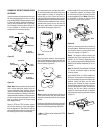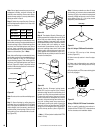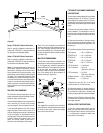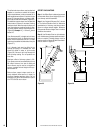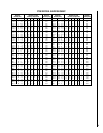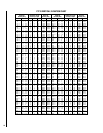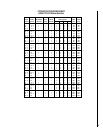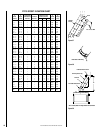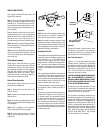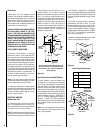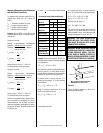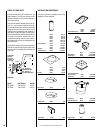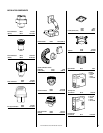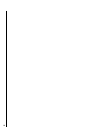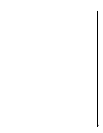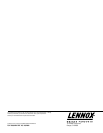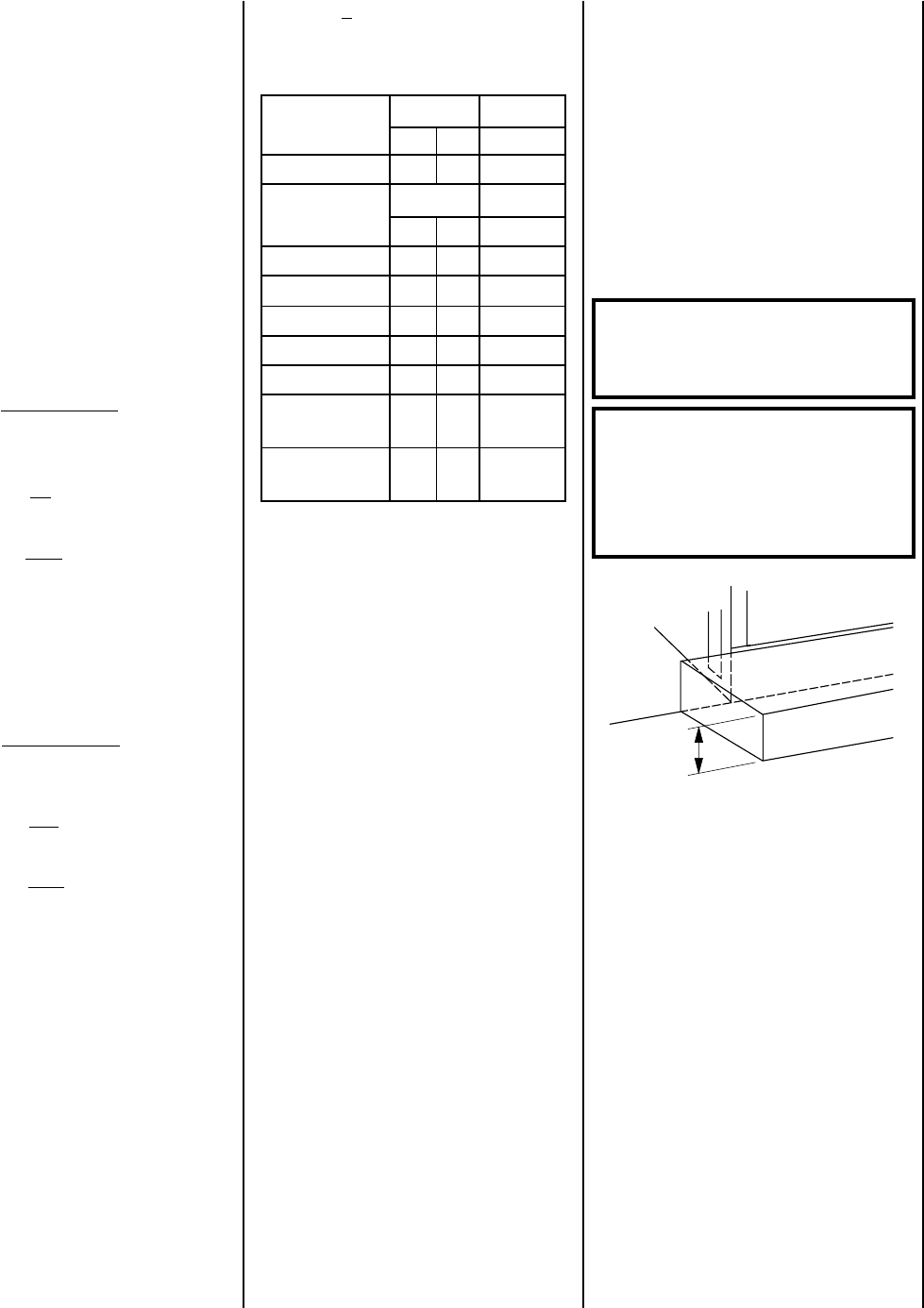
NOTE: DIAGRAMS & ILLUSTRATIONS NOT TO SCALE.
19
Methods of Determining Hearth Extension
and Wall Shield Equivalents
To determine the thickness required for any
material when either the k or r values are
known:
T
M
= Thickness of material in inches
k
M
= K value of desired material
r
M
= R value of desired material
T
L
= Minimum listed thickness
Example: Micore CV230 is to be used for the
hearth extension fireplace. How thick must this
material be?
Using the k formula:
Desired k value of desired Min. thickness
Required = material (per inch) x of Listed
Thickness k value of listed Material
material (per inch)
T
M
(inches) = k
M
x T
L
1.28
T
M
(inches) = 0.43* x 1"
1.28
Answer using k = 0.34 x 1" = 0.34 = ³⁄₈"
³⁄₈" thickness Micore will be required.
Using the r formula:
Desired r value of listed Min. thickness
Required = material (per inch)x of Listed
Thickness r value of desired Material
material (per inch)
T
M
(inches) = 0.78 x T
L
r
M
T
M
(inches) = 0.78 x 1"
2.33*
Answer using r = 0.34 x 1" = .034 = ³⁄₈"
³⁄₈" thickness Micore will be required.
At times it is important to know what combina-
tion of materials are acceptable for use as
hearth extensions. The “R values” are used to
determine acceptable combinations of materi-
als because “R values” are additive where r and
k values are not.
“R value” = 1 = r x thickness of material used
k
Alternative Hearth Extension Materials
Listed Values Min. Thick
Material k r T
L
Millboard .84 1.19 ³⁄₄"
Alternative Values Min. Thick
Materials k r T
M
Wonderboard 1.92 0.56 1 ³⁄₄"
Common brick 5.00 0.20 4 ¹⁄₂"
Cement mortar 5.00 0.20 4 ¹⁄₂"
Ceramic tile 12.5 0.08 11 ¹⁄₄"
Marble 11.0 0.09 10"
Micore CV230 0.43 2.33 ¹⁄₂"
(U.S. Gypsum)
Ceraform 126 0.27 3.70 ¹⁄₄"
(Johns-Manville)
Example: Given that the required “R value” for
a suitable hearth extension used must be equal
to or greater than:
“R” = r x T
L
= 0.78 x 1" = 0.78.
If it is desired to elevate a marble hearth exten-
sion to a level of 5" or more above the floor
surface. What combination of noncombustible
materials can be used to accomplish this?
If common brick is used so that the 3 ¹⁄₂"
dimension is the height, “R” for the common
brick becomes:
“R”
M
= r x T
M
= 0.20 x 3 ¹⁄₂" = .70
Using ¹⁄₂" of mortar to set the brick, “R” for the
mortar is calculated as follows:
“R”
M
= r x T
M
= 0.20 x ¹⁄₂" = .10
*value taken from chart
A ³⁄₄" marble slab set in ¹⁄₂" mortar covers the
brick, “R” for the marble and mortar becomes:
“R”
M
= r x T
M
= 0.09 x ³⁄₄" = .068
“R”
M
= r x T
M
= 0.20 x ¹⁄₂" = .10
The sum of all “R values” is:
.70 + .10 +. 068 + .10 = .968
This would be an acceptable combination of
material for the hearth extension since the
total calculated “R value” of the materials used
exceeds the required “R value” of 0.78.
WARNING: THE CRACK BETWEEN THE
FIREPLACE AND THE HEARTH EXTEN-
SION MUST BE SEALED WITH A NON-
COMBUSTIBLE MATERIAL.
WARNING: WHEN INSTALLING HEARTH
EXTENSION IN FRONT OF A NON-CIRCU-
LATING FIREPLACE MODEL, THE FIRE-
PLACE MUST BE RAISED IF HEIGHT OF
HEARTH EXTENSION EXCEEDS 6" ABOVE
THE BOTTOM OF FIREPLACE (
FIGURE 45
).
Figure 45
Secure the hearth extension to the floor to
prevent possible shifting.
6"
Max. Thickness Of Hearth Extension
When Models Are On The Floor



